The Plakat Trilogy
By: Joep van Esch
Submitted: 4/19/2008
Black (asymmetrical) traditional PK male (Dong)
Metallic blue asymmetrical show PK male (J. van Esch)
Blue/red multicolor symmetrical PK male (Morris Gabriel)
Shortfinned bettas have gained much popularity in the betta world because of their compact, vital appearance. They often also have the advantage above longfinned bettas that they are better able to carry their finnage throughout their live and are less prone to finrot. Shortfinned bettas, also known as plakats are finnage-wise the closest related to the wildtype form. For ages, Thai breeders bred this form from wild caught bettas in order to develop its fighting nature, style, hardiness, size and color. This practice of selective breeding stood at the base of the different colors and tail types we know today.
It was the selective breeding of Guy Delaval (France) in the 80s, with fish originating petshops, Paris Jones (USA) and Peter Goettner (USA), which gave rise to bettas with an increased caudal spread (up to 180 degrees). Since the cover of FAMA magazine in 1993 showed a picture of a turquoise halfmoon (HM) male, which was bred by the international CHENMASWIL partnership consisting of Laurent Chenot (France), Rajiv Massilamoni (Switserland) and Jeff Wilson (USA), the D-shaped caudal conquered the betta-world! In the years to follow the HMs were further perfected leading to the standard we know today. This development also had its effect on the evolution of other tailtypes. Nowadays the standards of both singletail as doubletail fish ideally describe a D-shaped caudal. But keep in mind that there is more than only the caudal and that the ideal HM is characterized by an overall balance which can be captured in a circle.
For many years traditional plakats were the only type seen at betta shows but the HM fever also led to the evolution of the shortfinned tailtype. Crossing longfinned HMs to traditional PKs led to the development of the halfmoon plakat (HMPK). Like the traditional PK, the form of the HMPK is asymmetrical but combining traits of both traditional PKs and HMs. In 2005 the IBC officially distinguished (asymmetrical) traditional PKs and asymmetrical show PKs by creating a separate standard for both forms. Both standards show great overlap but differ in two essential points: the caudal and dorsal finnage.
When breeding longfinned HMs the ultimate goal is a fish with a balanced appearance, isn't it therefore strange that the standard for HM PKs was describing an asymmetrical fish? Logically, the increasing interest in show plakats lead to the development of another type of PK, the symmetrical PK, the shortfinned equivalent of the longfinned HM also often reffered to as "shortmoon". The IBC responded on this trend by the development of a trail standard and can be considered to be the shortfinned variant of the standard used for longfinned HMs.
The ideal HM according to Yia Ly (France) [2]
The expansion of one PK class into three PK classes off course can create some confusion. So what are the similarities and differences between these standards?
Overall appearance: As the name already indicates, asymmetrical (traditional) and show PKs have an unbalanced appearance mostly caused by the length of the ventral fins and the shape of the anal fin. Symmetrical PKs on the other hand have a balanced appearance and ideally can be captured in an oval.
Body: The bodyshape in all three PK types is more or less similar. It is important that the body matches the finnage of the fish. Ideally the body should have a full volume with a strong peduncle. The "mouth-to-dorsal" topline should be smooth without dips and bumps. The back of the body should be nearly symmetrical (almost like a mirror image when one would draw an imaginary midlateral line) with a strong peduncle. The scaling on the body should be nicely aligned.
Caudal: In all three PK types the spread of the caudal ideally should be 180 degrees but the differences lie in the shape and branching of the rays. The caudal of (asymmetrical) traditional PKs is allowed to be rounded or spade-shaped. In my personal opinion the ideal (asymmetrical) traditional PK should have a primary (2-ray) branching. According to the IBC standard both a primary as a secondary (4-ray) branching are allowed. The spread in the caudal is not caused by an increase of branching but by an increase of webbing between the rays. The caudal of both asymmetrical show PKs and symmetrical PKs have straight rays, sharp edges and the shape of a semi-circle (capital "D"). The rays in the caudal often have a secondary branching (4-ray) or more (but should not be excessive). A >180 degree spread (overhalfmoon, oHM) is not preferred above a 180 degree spread. Here, the caudal should be no longer than 1/3 of the body.
Dorsal: In all three types, overlap of the dorsal with the body is not desirable and the front rays (near the head) can not be too short (as often seen in fish carrying DT). The dorsal of (asymmetrical) traditional PKs has the shape of a half/semi-circle with a possible slight pointed appearance and has a full volume. The dorsal of asymmetrical show PKs should be semi-circular and preferably snap open as a fan. The capacity of the fin to open in this fashion is often achieved not by increase in volume, but by an increase in fin ray branching. In symmetrical PKs the dorsal fin is usually a bit rectangular but it is important that the shape and size both do not disturb the overall balance. The desired effect is typically achieved by an increase in the number of fin rays.
Anal: The anal starts at the thickest point of the body (just behind the stomach) and continues towards the peduncle. In the most ideal situation the anal overlaps the lower part of the caudal during flaring. In (asymmetrical) traditional PKs, the anal fin has the shape of a trapezium with the short part in the front and the longer part in the back which runs into a clear pointed tip. The length of the last ray is usually about 2 times the lower part of the caudal. The shape of the anal in asymmetrical show PKs is quite similar but lacks the clear pointed tip which is not desired here. In symmetrical PKs the anal is expected to be more rectangular and runs parallel to the body. The length of the rays is more or less the same and is equivalent to that of the lower part of the caudal and height of the dorsal in order to maintain the overall balance.
Ventrals: The ventral fins of (asymmetrical) traditional PKs can be either full or thin. The length should be minimal 2/3 the length of the body (as measured from the base of the ventral fin to the caudal peduncle) or longer. The ventral fins of asymmetrical show PKs should be of same length but preferably should have a full appearance. In contrast to both asymmetrical PK types, the ventrals of symmetrical PKs ideally should be in full balance with the length unpaired fins in order to preserve the symmetrical appearance.
Keep in mind that the three classes for PKs are pointing out the ideal situation. In real life the existence of three classes for PKs also creates difficulties. This especially in classifying fish for shows. Crosses between the different PK types or longfinned fish often also give rise to "in-between-forms" which are often reffered to as "transitional PKs". The existence of three different PK classes logically leads to two types of "transitional PKs":
1) "Transitional PK type 1" is an in-between-form of traditional PKs and asymmetrical show PKs. The caudal of this type usually shows multiple branching (varying from 4- to 8-ray) as seen in the caudals of asymmetrical show PKs but the edges are usually rounded which reminds us of the caudal of the (asymmetrical) traditional PK. The anal is often also is in is less pointed as in the (asymmetrical) traditional PK but longer as in the asymmetrical show PK.
2) "Transitional PK type 2" is an in-between-form of asymmetrical show PKs and symmetrical PKs. The difficulty lies here in the shape of the dorsal, anal and ventral fins. The dorsal is usually rectangular shaped. The anal is less sloped as in asymmetrical show PKs and but also less parallel than in the symmetrical PKs. The ventrals usually also have a length in between both forms.
|In general, these fish usually do not make it to top placings in either class but are often good material to work with and to build a nice line.
I hope you enjoyed reading this article and that this has given you a bit more insight in the different types of PKs which are currently found in the betta-scene throughout the world.
Results 201 to 210 of 12139
-
10-24-2008, 01:59 PM #201
-
10-24-2008, 02:03 PM #202
The True Story of the Halfmoon
By: Victoria Parnell
Submitted: 4/29/2005
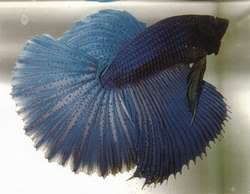
R39 - The father of the Halfmoon
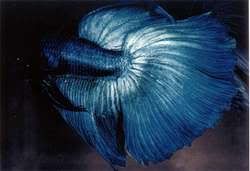
The great 'Mr. G'. This is the photo Rajiv carried around with him in his quest to find another betta to equal him. Photo by Peter Goettner.
In 1982, American breeder Peter Goettner bred a fish that was well ahead of its time. This fish was a green STM with a caudal of almost 180 degrees, and was dubbed 'Mr. Great' by the admiring betta community. Goettner revealed that he acquired the stock that ultimately produced Mr. Great (or 'Mr. G' as he was later called) by another breeder, Parris Jones of the US, who had been improving on a line he had procurred from yet another American breeder, Chuck Hale, in 1977. Between 1983 and 1986 a group of French breeders began importing stock from several top American breeders, including Goettner and Jones, one of which was Guy Delaval.
Delaval was already an accomplished Guppy breeder, and several years before had decided to try his hand at bettas. He started with pet store fare, working the quality up to spec by selectively breeding the finest fish from his spawning attempts in a very particular pattern: brother to sister, and then father to daughter, for several generations. A peculiar feature of Delaval's line was that many of them had a white edge to their fins, a trait still seen in many Halfmoon bettas today. As the quality of Delaval's bettas increased, he began to realize he was on to something special, and worked even harder to perfect his 'ideal'. Working with only four tanks and about twenty jars, Delaval bred hard and culled hard, keeping only the very best to continue the line.
In 1987, Delaval exhibited his fish at a betta show in Lyon, France. Although the early Halfmoons (as they were later to be called) were amazing in both form and symmetry, they did not get much more than a passing interest from the judges at the show, mainly due to the fact that judges were used to seeing a particular form in the show betta and, as a result, were loathe to change their vision of the 'ideal' show betta. At that time, the types of betta that was winning shows were roundtails and doubletails, and Delaval's fish probably looked eons apart from what they were accustomed to seeing. After the show, the President of the Anabantoid Association of Germany wrote a brief report on the show, generously praising the winners and contestants. Of Delaval's groundbreaking entries he wrote only that they were 'nice'.
In 1988 Delaval then exhibited his fish at a show in LeMann, France. Although his fish were again overlooked in the judging, at least one fellow breeder was thunderstruck by what Delaval had been able to accomplish: Rajiv Masillamoni. Masillamoni had a habit of carrying with him at all times a photograph of Mr. G, which he showed to everyone at every betta event he was able to attend, enthusing about the perfection of the form and asking where he might acquire a fish of it's caliber. Needless to say, when he first laid eyes on Delaval's entries, which were even better in spread and symmetry than what he had dared to dream, the photo of Mr. G slipped forgotten from his fingertips. He immediately began drilling Delaval about his fish, and was able to purchase two of the three 180 degree caudal males that Delaval had brought with him to the show, as well as five other males and two females from the same line. Masillamoni spirited his treasures back home to Switzerland, where he began breeding them with a passion. To his shock and horror he came to realize that every one of the seven males he had purchased from Delaval were unable to spawn properly. Although they would build a nest and court the female, they didn't seem able to perform the embrace and sire offspring. This didn't seem to be a fault of the form so much as a result of too much inbreeding, confirmed when Masillamoni consulted two other breeders who had acquired stock from Delaval -- Laurent Chenot and Marc Maurin -- who reported similar failures. Reduced to relying on the females alone, Masillamoni crossed them against pet store bettas, producing fish which were nowhere close to the quality of the original Delaval stock in either form or symmetry. When a stroke of bad luck killed one of the females, it seemed the entire venture would be doomed. However, Fortune was with Masillamoni and his project, and he was soon introduced to an American IBC member who happened to be visiting Switzerland and was able to give him a melano doubletail male from the Parris Jones line. Masillamoni bred the male to his one remaining Delaval female, and was rewarded with one fish that stood out from the rest. The fish was given the number 'R39', and was a green male with a perfect 180 degree caudal fin.
Desperate to continue the line, Masillamoni bred the fish with every female in his possession, and then teamed up with Laurent Chenot and breeder Jean Luc Corso, who bred him to their females as well. The offspring of these crosses formed the very foundation of the first true Halfmoon breeding line, and it can be reasonably stated that all Halfmoon fish today are descendants of this one male -- R39.
In 1991 Masillamoni brought his 180 degree bettas with him to the 25th Annual IBC Convention, held in Milwaukee, Wisconsin that year. He was flabbergasted to discover that, once again, the judges were completely overlooking his fish in favor of the more standard fin types of doubletail and roundtail. However, the European entries did not escape the notice of several top breeders of that time, including Jeff Wilson, Peter Goettner, Parris Jones, Paul Hardy, and John Benn, who brought some of Masillamoni's fish home with them to breed into their own show lines. It was at this show that Jeff Wilson first quipped that the new tail shape looked like a half moon, and the term 'Halfmoon' stuck.
Inspired by the mutual interest, Masillamoni joined forces with Wilson and Laurent Chenot to try to cement the trait into a solid line. The three breeders frequently exchanged their best fish, with one fish often being passed to all three, siring spawns in America, France, and Switzerland. By spawning the best fish from all three ventures, they were able to more quickly and effectively produce the Halfmoon betta, carefully documenting in both film and writing whether each successive generation was better than the previous.
In 1992, the Masillamoni and Wilson decided to show their best Halfmoon fish at the 1992 IBC Convention in Alabama, quietly making a pact between them that, even if their fish were again rejected in competition, they would continue working the line. Although they showed many Halfmoons, only one of their fish placed -- a green that took 2nd in Form and Finnage Variations. The class titles and Best of Show were again awarded to the popular roundtailed entries.
The Halfmoon team was saved from disappointment by the increased interest shown by other breeders. Eventually enough interest was shown to warrant a new betta club just to perpetuate and preserve the Halfmoon form, and the International Betta Splendens Club was born. While breeding and exchanging stock over international borders, Masillamoni was approached by Marc Maurin, who requested a Halfmoon pair that would serve as his starter stock in France. At that time, Masillamoni only had 5 Halfmoon males good enough to breed, but he nevertheless selected his least favorite from these and gave it to Maurin. Two weeks later, Masillamoni was preparing to leave for yet another betta show in America when Maurin sent his male back to him from France, stating that it would not spawn. Although Masillamoni did not consider the fish of good enough quality to meet his standards, he made the last minute decision to include it with the other entries he was bringing to the US, including the four superior Halfmoon spawn brothers.
In transit to the show, Masillamoni was detained by a flight attendant, who informed him that the bag containing his 25 show fish was too large to fit in the overhead compartment and would have to be taken to the cargo hold. Understandably he protested, informing her that the bag contained valuable live fish on their way to an important fish show in America, and he would not let them out of his sight. When the attendant insisted, Masillamoni (his jaw set firmly in determination) informed her that he would not be taking the flight if his bag couldn't be kept in the cabin. With both parties frustrated, a compromise was finally reached -- the attendant would take the fish into First Class, where they could complete the journey in the roomier overhead compartments.
Midway through the flight, Masillamoni decided to check on how his fish were getting on, but when he inquired after them in First Class he was told they had been moved to the cargo hold after all. Fearing the worst, he searched frantically for his bag, and finally found it in the unpressurized hold. All 25 bags had burst, and the fish were barely alive and flipping weakly in their empty bags. Panicked, Masillamoni made such a ruckus that he attracted the attention of the Chief Steward, who happened to be a fish lover and took control of the situation. He provided plastic bags, and ordered the stewardesses to bring him bottled water. Because it was refrigerated, the stewardesses were instructed to warm each bottle up with a hair dryer until the water was room temperature, and he and Masillamoni then carefully placed the struggling bettas into fresh bags of water. Happily, every fish survived.
Because he was an apprentice Judge, Masillamoni was kept quite busy at the show, but couldn't help but notice that, once again, his Halfmoons were getting overlooked in favor of the roundtails and deltas. Concealing his disappointment, he instead threw himself into the task at hand and tried not to think about it. However, while lining up the class winners for the Best of Show judging, he noticed the first place award on one very unique green male -- a Halfmoon! On closer inspection, he found that it was the very same fish returned to him by Marc Maurin, the fish he did not consider good enough to compete. Somehow, even though the judges had failed to even place the better Halfmoon specimens, this fish had taken the Turquoise/Green class and was now in the running for Best of Show.
As one after another of the Best of Show contestants were eliminated, Masillamoni was biting his fingernails. The green Halfmoon was still in the running. The judges continued to pare away the competition, until the decision was left between the Halfmoon entry and a royal blue male bred by Peter Goettner which showed a 160 degree caudal spread. It was clearly evident that the judges preferred the Goettner fish, but the outcome remained in contention. As a last resort, they called in a highly experienced Judge -- Mr. Jim Williams -- and asked his opinion. Since this was the same judge that placed the Goettner fish first in the Blue class, Masillamoni felt the matter was already decided. However, Williams examined both fish carefully under a bright flashlight for ten minutes, then switched to a magnifying class. 'There it is!' he finally announced to the waiting crowd. 'The blue is missing a scale.' IBC Convention Best of Show Male was awarded to the Green Halfmoon from Switzerland.
As it happened, a reporter from FAMA Magazine was in attendance, and recognized the Halfmoon as extraordinary. He featured the Best of Show male on the cover of the magazine and also ran a story about the origin of the Halfmoon. With the increased exposure, more breeders throughout the United States and Europe became intrigued by the form, and clamored to acquire fish from the line. Peter Goettner, Sieg Illig, Leo Buss, Bonnie McKinley and others started breeding for the 180 degree caudal form. A combination of the popularity of the breeders and the quality of the fish helped to popularize the form, and soon Halfmoon bettas were winning competitions across the United States. Always passionate about their little native fish, breeders from Thailand sent special requests to European and American breeders for Halfmoon stock in the late 1990's, and many breeders were able to part with enough good breeding fish to give the Asians a leg up into the tree. With their ideal breeding and raising conditions, they were able to take the form and run with it, and by 2003 were consistently producing fish of an even better quality than those seen in Europe and America. Today the Halfmoon form is the overwhelming preference of breeders the world over, who strive to breed the very best while incorporating a passion and science unseen in most other hobbies. It is truly the form which redefined the standards of the Show Betta.
Many thanks to our new friend in Switzerland, Rajiv Masillamoni, for his help in writing this article. Both Rajiv and Markus Gutzeit were willing to donate their time and photos to me when asked, including making phone calls all the way from Switzerland and scanning several pages of letters, notes, and photos. I found Rajiv is not only an extremely generous person, but an engaging conversationalist. Although I originally asked Rajiv for some insight and clarification into the history of the HM form, I was rewarded with a compelling and intensely rewarding story which had all the great elements: passion, intrigue, obstacles, and one HELL of a plot twist. Because the whole story could not possibly be included the project I am working on, I wanted to publish it here. I hope you enjoyed it as much as I did.
-
10-24-2008, 02:07 PM #203
What Is A Crowntail?
By: BettySplendens
Submitted: 8/5/2004
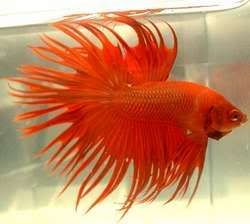
Extended red DR CT
The Crowntail was founded 1997 in West Jakarta, Slipi, Indonesia, and the creator was an Indonesian breeder named Achmad Yusuf (Iyus), who called it 'cupang serit' in Indonesian. When Henry Yin showed this fish in one of the IBC shows, he named it CROWNTAIL.
Here the tail rays extend beyond the tail edge, producing a crown-like appearance (sometimes referred to as "Combtail"). How much the rays may extend depends on the genetic makeup of the fish. The crowntail trait can be found in bettas of any tail type and shape. For instance it can be seen in VT, D, SD, HM (CTHM = half-sun) and DT. The crowntail gene is recessive (or actually intermediar), but singletail carriers most of the time already show more or less extended rays beyond the tail edge.
Crowntail genetics
A normal singletail betta is represented by: ctct
A crowntail betta is homozygous for the crowntail gene (CT) and is represented by: CTCT
A singletail betta which is carrier for the crowntail gene is then represented by: CTct
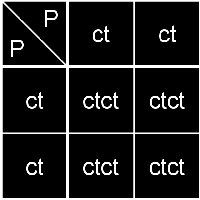
- When a crowntail male (CTCT) is crossed with a single tail female (ctct), their offspring will be 100% singletail and carrier for the crowntail gene(CTct).
- When a singletail crowntail carrier male (CTct) is crossed with a single tail crowntail carrier female (CTct), their offspring will be 25% crowntail (CTCT), 50% singletail and carrier for the crowntail gene (CTct) and 25% singletail (ctct).
- When a crowntail male (CTCT) is crossed with a crowntail female (CTCT), their offspring will be 100% crowntail (CTCT).
Defining a Good Crowntail
By: BettySplendens
Submitted: 8/5/2004
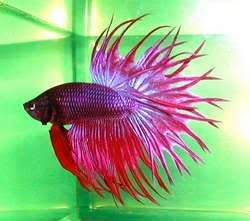
Given recognition by Phil Ngu as being an 'ideal crowntail' in finnage and form, this male demonstrates the Cross Ray trait. Fish by Malcolm.
Let's start by providing a definition of what a good CT should look like, using the new IBC Crowntail Standards published in the March/April 2004 issue of Flare! magazine as a medium of reference. It should be kept in mind that the standards only apply to male CT bettas; females are judged in the standard color classes for their respective color types.
For the purpose of showing in the CT class, Crowntails are defined as bettas exhibiting at least 33% reduction in webbing versus ray length in each of the three primary fins (caudal, anal and dorsal). This requirement must be demonstrated in all three primary fins but does not need to be exhibited between all rays to meet the minimum requirement to be classified as a Crowntail betta.
Single ray - In the 'SR' CT, web margins are, ideally, uniform and webbing reduction is equal between primary rays and rays with branches.
Cross Ray - The crossing of rays ('CR') is manifested by pairs of ray extensions that curve over each other.
Double Ray - In the 'DR' CT, webbing is reduced at the two levels: one between a pair of rays and the other, more profoundly, between two ray branches. Breeders put a premium on double-ray and 4 ray extension Crowntails. These traits are to be regarded as neutral and are not to be pointed above single ray extended Crowntails. Four ray and even eight ray extensions are less common and the effect is almost always confined to the caudal fin only.
Double Double Ray - 'DDR' is double double ray, hence a four ray extended branching.
Random Ray - The term 'RR' basically means that the caudal spread has mixed single ray, double ray, 3 rays and 4 rays extended branching all mixed up. It is used to describe those whose extended ray patterns are not fixed.
For the purpose of judging CT in IBC sanctioned showing, these are the desired traits judges are encouraged to look for:
1. 33% reduction in webbing material for each primary fin is minimum. 50% reduction in webbing material in all three primary fins is ideal.
2. Ray extensions to be uniform in balance, length and spacing (symmetrical).
3. Double and 4 ray extensions in dorsal and anal fins to match caudal extensions.
Undesirable traits for Crowntails:
1. Less than 33% reduction in webbing material in 2 or all 3 primary fins is a DISQUALIFYING FAULT.
2. Less than 33% reduction in webbing material in 1 primary fin is a SEVERE fault.
3. Ray extensions of different lengths are MINOR faults unless the rays are in even, repeating pattern.
4. Random rays, for example, single protruding rays in a double ray or 4 ray Crowntail, should not be regarded more than a MINOR fault and ignored if there is only a single ray protruding ray.
5. Curled or bent ray extensions are each a MINOR fault.
6. Non-symmetrical spaces between ray extensions are each a MINOR fault.Last edited by The Good$!!!; 10-24-2008 at 02:10 PM.
-
10-24-2008, 02:12 PM #204
Defining a Good Doubletail
By: Victoria Parnell
Submitted: 9/29/2004
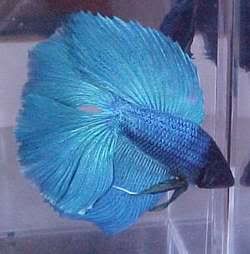
This turquoise DTM won Best of Show Male, RMBS - Spring, 2003
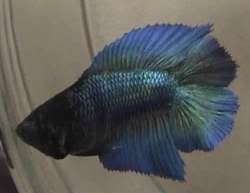
Excellent DTF by Dan Young. 1st Place, World Halfmoon Expo I 2002
We all have our preferences for how a good fish should look, but for the purpose of this article I will be illustrating the ideal as defined by the IBC Judging Standards (Chapter 5, revised).
Keep in mind that the ideal appearance of a quality betta, whether single- or doubletail, is a full circle with no open spaces between the three unpaired fins.
The base of the dorsal fin of a doubletail betta is expected to be considerably broader than that found in the singletail. The doubletail dorsal is, ideally, the mirror image of the anal fin in keeping with the concept of symmetry.
Doubletail bettas may have a deeper (top to bottom) body than singletailed bettas. The thicker body is acceptable, as long as it contributes to the support of the larger finnage.
They should have caudal rays evenly distributed above and below the centerline of the fish. Proportionate volume is ideal as opposed to length. The volume of the upper and lower caudal should be equal and equally distributed above and below the centerline. The two caudals may overlap but should be separated all the way to the caudal peduncle. A half circle is ideal for the overall shape of the two caudal fins.
Doubletail bettas are expected to differ in several ways from the singletail:
1. Possess two distinct 'tails' or caudal lobes instead of one, with complete separation to the base of the caudal peduncle.
2. Possess a wider caudal peduncle to support the double lobes.
3. Possess a larger dorsal fin, nearly the size of the anal fin.
4. Their bodies are usually more 'chunky' and often a bit shorter.
5. Bends in the caudal peduncle are expressed to a varying degree in almost all doubletail bettas. These are more easily noticed when viewing the fish from above. Easily seen bends should be faulted; if the bend is not excessive when viewed from above, the fish should not be penalized.
Doubletails are docked points for not conforming to the articulated standard. How much they are penalized is based on the severity of the fault.
Body Faults:
Doubletail body too short or stout (slight fault)
Doubletail caudal peduncle bump or bend very noticable (major fault)
Dorsal Faults:
Doubletail dorsal slightly more narrow than the anal (minor fault)
Doubletail dorsal has a few short rays at the front edge, not matched on anal (minor fault)
Doubletail dorsal is much more narrow than the anal (major fault)
Caudal Faults:
Doubletail caudal lobes are full, but separation not quite compete -- separation still greater than 3/4 (slight fault)
Doubletail caudal lobes slightly mismatched (minor fault)
Doubletail caudal lobes separation between 1/2 and 3/4 (minor fault)
Doubletail caudal lobes considerably mismatched in volume or shape (major fault)
Doubletail caudal lobes matched, but narrow (major fault)
Doubletail caudal lobes separation 1/2 or less (major fault)
Doubletail caudal lobes mismatched and narrow (severe fault)
Although with the advent of the Halfmoon craze the DT betta has lost much of its initial appeal, in my opinion there are still few things more magnificent than a fully-symmetrical, stout doubletail with overlapping fins in full flare!
-
10-24-2008, 02:37 PM #205
-
10-24-2008, 05:08 PM #206
believe jud mi ana president sa ABA oist...knsa diay na xa?? kna the Goods...maayuha jd oist...pres. jd
-
10-24-2008, 06:37 PM #207
-
10-24-2008, 07:19 PM #208
next week bei..mana jud agony nko....plan ta ana tnan.....bei..nkaha puruhan mahalin ni fries dwe?? f halin ni.palit tko EB,...he.he....
mayta kakuha pud ko nendot nga half moon CT's oist..nendot na bia tubig dwe..blue green nag color..he.he..para ka apil pud ko puhon, kng naay show2x....he.he.. hope for the best...>>
-
10-24-2008, 07:25 PM #209
next week ta plan tnan bei...mana man ako agony ana.....gaan nage tka...kani nlng gkan pamusa......ing gawas piso ani......imu cage bei..plan pd ta...palit ta daan kabilya ana..bsag usa lng...ok rman daw...mga 9mm o 10 mm lng...
nka kaha purohan mahalin ning fries bei?? ako ta ipalit ug EB>>> mayta maka own nkog half moon CT's oist...para ka apil fud kog show2x puhon f mag organize ang ABA....he.he......f mka wawarts nako bei..pa apila ko ABA>>>>>hehe.....
-
10-24-2008, 09:07 PM #210
Advertisement
Similar Threads |
|




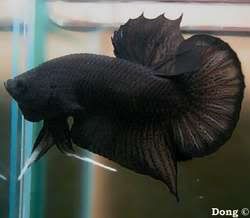
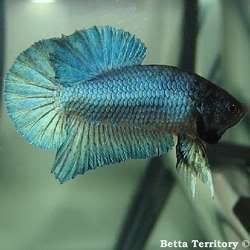
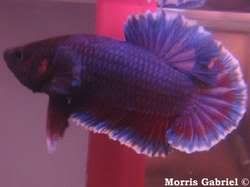
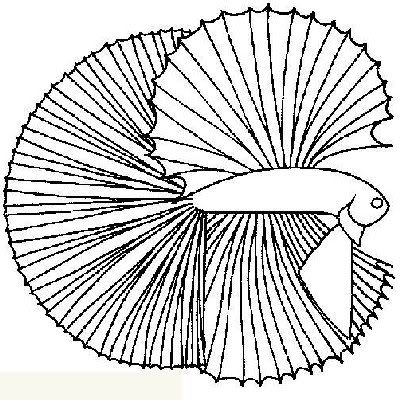

 Reply With Quote
Reply With Quote
 !
!


